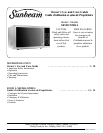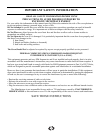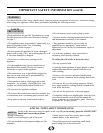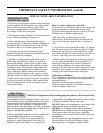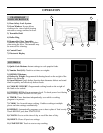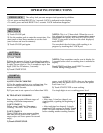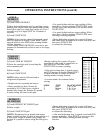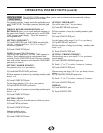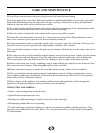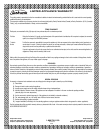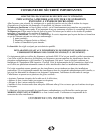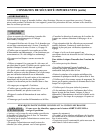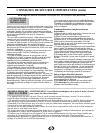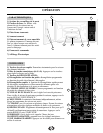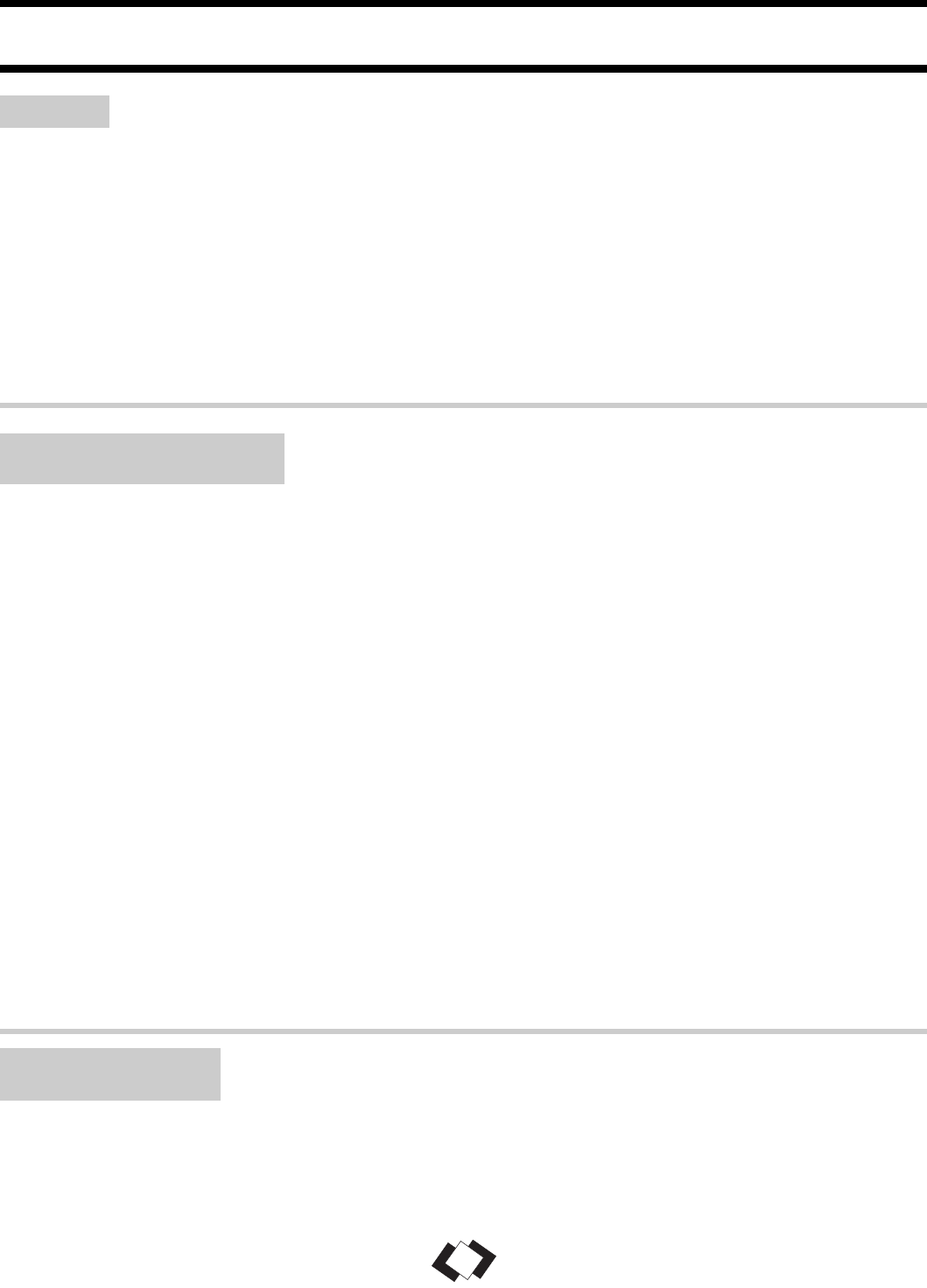
• Only cook popcorn in your microwave oven using
a special microwave popcorn accessory dish, unless
you use popcorn labeled for use in microwave ovens.
• Some products- such as whole eggs (with shell),
sealed containers, and closed jars - will explode and
should not be heated in this microwave oven.
Heating these products in the microwave oven could
result in injury.
• Do not boil eggs in a microwave oven. Pressure
will build up inside egg yolk and will cause it to
burst, possibly resulting in injury.
• Operating the microwave with no food inside for
more than a minute or two may cause damage to the
oven and could start a fire. It increases the heat
around the magnetron and can shorten the life of the
oven.
• Foods with unbroken outer “skin” such as potatoes,
hot dogs, sausages, tomatoes, apples, chicken livers
and other giblets, and egg yolks should be pierced to
allow steam to escape before cooking.
IMPORTANT SAFETY INFORMATION (cont’d)
FOODS
3
SAFETY FACT:
SUPERHEATED WATER
Microwaved water and other liquids do not always
bubble when they reach the boiling point; they can
actually get superheated and not bubble at all.
Superheated liquid can bubble up when it is moved or
when something like a spoon or tea bag is put into it.
To prevent this from happening and causing injury, do
not heat any liquid for more than 2 minutes per cup.
After heating, let the cup stand in the microwave for 30
seconds before moving it or putting anything into it.
• Avoid heating baby food in glass jars, even with the
lid off. Make sure all infant food is thoroughly
cooked. Stir food to distribute the heat evenly. Be
careful to prevent scalding when warming formula.
The container may feel cooler than the milk really is.
Always test the milk before feeding the baby.
• Spontaneous boiling- Under certain circumstances,
liquids may start to boilduring or shortly after
removal from the microwave oven. To prevent burns
from splashing liquid, we recommend the following:
Before removing the container from the oven, allow
the container to stand in the the oven for 30 to 40
seconds after the oven has shut off. Do not boil
liquids in narrow-necked containers such as soft drink
bottles, wine flasks and especially narrow-necked
coffee cups. Even if the container is opened,
excessive steam can build up and cause it to burst or
overflow.
• Don’t defrost frozen beverages in narrow-necked
bottles (especially carbonated beverages). Even if the
container is opened, pressure can build up. This can
cause the container to burst, possibly resulting in
injury.
• Hot foods and steam can cause burns. Be careful
when opening any containers of hot food, including
popcorn bags, cooking pouches and boxes. To prevent
possible injury, direct steam away from hands and
face.
• Do not overcook potatoes. They could dehydrate
and catch fire, causing damage to your oven.
• Cook meat and poultry thoroughly- meat to at least
an INTERNAL temperature of 160°F (71.1°C), and
poultry to at least an INTERNAL temperature of
180°F (82.2°C). Cooking to these temperatures
usually protects against food borne illness.
MICROWAVE-SAFE
COOKWARE
Most glass casserole, cooking dishes, measuring cups, custard cups, pottery or china dinnerware which do not
have metallic trim or glaze with a metallic sheen can be used. Some cookware will be labeled “suitable for
microwaving”.
• If you use a meat thermometer while cooking, make sure it is safe for use in microwave ovens.
Make sure all cookware used in your microwave oven is suitable for microwaving.



